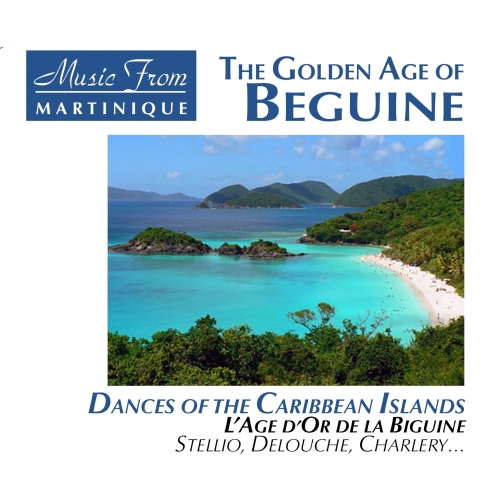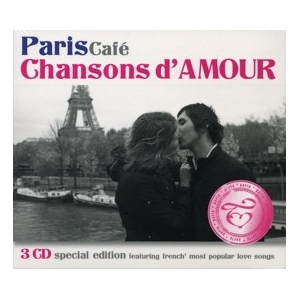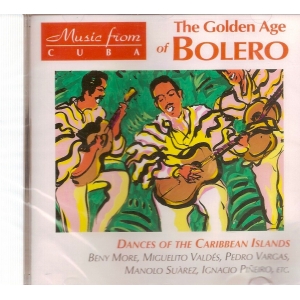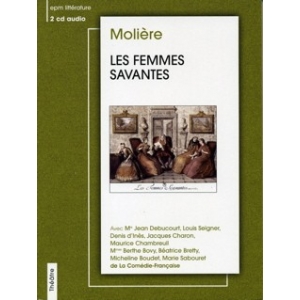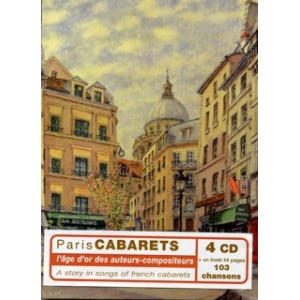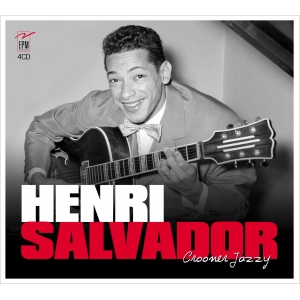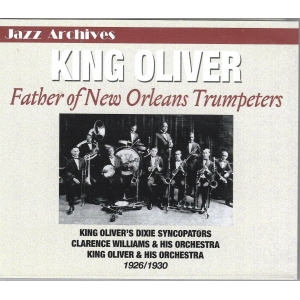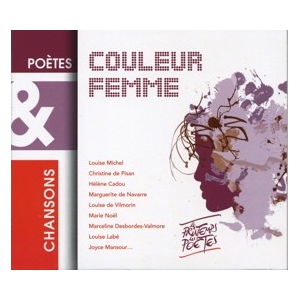Votre panier
Il n'y a plus d'articles dans votre panier
MARTINIQUE - CARAÏBES / L'AGE D'OR DE LA BIGUINE
R297
8,00 €
TTC
1 CD - 19 TITRES / L’ÂGE D’OR DE LA BIGUINE / LES GRANDS SUCCÈS DE LA MARTINIQUE & DES CARAÏBES
VOUS RECEVREZ UN BON D'ACHAT 10% À PARTIR DE 40 € DE COMMANDE
LES GRANDS SUCCÈS DE LA MARTINIQUE & DES CARAÏBES
1 Olga 2'57"
2 Balcon fleuri 2'52"
3 Amantine! Amantine! 2'50"
4 Pleurez pleurez chabin 3'01"
5 Renée 2'56"
6 Pou quatre sous gros gateaux 3'05"
7 Marie-Thérèse 2'54"
8 Matadô-A 3'04"
9 Douvan jou 2'42"
10 Memene 2'34"
11 Belles ti femmes 2'31"
12 Nain cochon 3'16"
13 Carnaval la l'année ta la 2'50"
14 En ti' punch 2'59"
15 Eugénie 3'04"
16 Chérie 3'07"
17 Gepe ka pike 2'56"
18 Les deux jumeaux 2'49"
19 Belle doudou 2'45"
LE PUNCH DE LA BIGUINE...Philippe ZaniCertains assurent que "biguine" provient du verbe anglais "to begin" (commencer)... Quoi qu'il en soit, la biguine est un rythme binaire syncopé qui naît vers 1850 en Martinique et en Guadeloupe.Les anciens esclaves établis à Saint-Pierre (Martinique) créent la première biguine. Leur situation est semblable à celle des musiciens de La Nouvelle-Orléans. Ils sont mal accueillis avec leurs manières rustiques et leurs tambours. Mais peu à peu, ils profitent des carnavals pour faire entendre leurs musiques et fusionner leurs "bèlairs" avec les danses affectionnées par les colons (quadrilles, polkas, mazurkas, etc...).En fait, en adaptant les rythmes des danses rurales au langage musical citadin, ils inventent la biguine-bèlair, et séduisent la société bourgeoise.La biguine est interprétée par des orchestres regroupant clarinette, trombone (qui par ses roulades en contrechants retranscrit les variations du tambour bélair), contrebasse, banjo à quatre cordes, batterie (appelée jazz), ti-bwa (des baguettes entrechoquées ou percutant un bambou posé sur un chevalet) et l'inévitable cha-cha (cylindre de fer blanc rempli de grenaille). Plus tard, s'ajoutent la guitare, le saxophone, le violon, le violoncelle, le piano ou l'accordéon.En 1902, l'éruption de la Montagne Pelée met un terme à la vie musicale de la ville de Saint-Pierre. Des musiciens, comme le clarinettiste Stellio, émigrent alors en Guyane et y lancent la biguine.Dans les années 20, la biguine évolue : elle subit l'emprise du jazz louisianais. Le lyrisme flamboyant de ses interprétations, fait de Stellio le Sidney Bechet antillais. En 1929, Stellio s'embarque pour la France. Paris savoure son genre rythmé et cadencé - à la façon créole - lors de l'exposition coloniale de 1931. De nombreux bals s'ouvrent dans divers quartiers. Jusqu'en 1950, la biguine reste en vogue dans des lieux comme Le Bal Nègre de la rue Blomet, La Boule Blanche, la Cigale, Le Tagada, l'Elan noir, etc...Stellio influencera beaucoup d'artistes comme Alexandre Kindou, ou Eugène Delouche (de l'orchestre Del's Jazz Biguine) qui deviendra l'interprète majeur de la valse antillaise.D'autres artistes récoltent aux Antilles ou en Métropole un certain succès. Par exemple, les Kaukira Boys avec Maurice Noiran à la clarinette, ou le Créol's Band d'Ernest Léardée avec pour saxophoniste, Félix Valvert (on peut remarquer son style dans le solo d'"Armide"ponctué par le banjo de Robert Charlery).Citons encore Sosso Pé-En-Kin qui chante en pleurant le destin des noirs qui servent de chairs à canon, ou Pollo Malahel. Dans "Carnaval...", "Nain Cochon" , "En ti' Punch", "Gépé Ka Piké", et "Les deux Jumeaux", ce dernier, avec sa guitare en métal à manche de banjo quatre cordes, exécute des solos emplis d'invention de swing et de subtilité.Dans la biguine, les femmes aussi sont à l'honneur. Maiötte Almaby, musicienne accomplie disparaît en 1939 mais Joséphine Baker popularise ses chansons.Revenons à la danse... La biguine se danse en couple. On roule les hanches tout en réalisant deux pas à gauche, puis deux pas à droite, avec les jambes parfaitement souples... Tout cela, bien sûr, se passe sur le rythme puissant du cha-cha. Un rythme envoûtant, tour à tour exalté ou lancinant, propre à enflammer les pieds des danseurs, et leurs corps... Car à Paris ou sur les îles, la biguine sera toujours une musique de danse sensuelle, voire érotique...It is sometimes alleged that the word beguine comes from to begin. Be that as it may, the beguine is a syncopated binary rhythm which was first heard in Martinique and Guadeloupe about 1850. Former slaves who settled at Saint-Pierre (Martinique) were the creators of the first beguine. Not unlike New-Orleans' musicians, their coarse manners and drums made them less than welcome. But little by little, they took advantage of carnivals to advertise their music and merge their bélairs with the dances already popular with the settlers (quadrilles, polkas, mazurkas, etc....). Indeed, by adapting the rhythms of country dances to urban music, they invented the bélair-beguine and became the darlings of the bourgeois society. The beguine was performed by bands including a clarinet, a trombone which thanks to its counterpoint roulades reproduces the variations of the bélair drum, a bass, a four string banjo, drums (known as jazz), ti-bwa (sticks knocked together or on a bamboo set on a stand) and the inevitable cha-cha, a tin cylinder filled with iron bits. Eventually they were joined by a guitar, saxophone, violin, cello, piano or accordion. In 1902, the eruption of Mount Pelée put an end to Saint-Pierre's musical activities. Musicians such as Stellio, a clarinettist, then emigrated to Guyana and popularised the beguine. In the twenties, the beguine became influenced by New-Orleans jazz. Stellio's flamboyant lyricism made him the Sidney Bechet of the West Indies. In 1929, Stellio sailed to France. During the 1931 Exposition Coloniale in Paris, his negro-like rhythm was a big success in the many dance halls opened up then : until the fifties the beguine remained the in thing in Le Bal Blomet, La Boule Blanche, la Cigale, Le Tagada, l'Elan noir, Le Bal Nègre, etc. Stellio influenced many other artists such as Alexandre Kindou and Eugène Delouche (from the Del's Jazz Beguine). The latter became the major interpreter of the West Indian waltz. Other successful artists, both in France and the West Indies, included the Kaukira Boys with Maurice Noiran at the clarinet, or the Ernest Léardée's Créol's Band with , Félix Valvert at the saxophone. (his style can be heard in "Armide"' a solo phrased by Robert Charlery's banjo). Last, but not least, mention must be made of Sosso Pé-En-Kin who laments the fate of the blacks used as cannon fodder and of Pollo Malahel. In "Carnaval...", "Nain Cochon" (Piggy) , "En ti Punch", "Gépé Ka Piké" and "the Twins", the latter performs swinging solos full of subtle inventiveness thanks to his metal made guitar with a banjo four-string neck. In the beguine, women were also in the limelight. Maötte Amaby, an accomplished musician died as early as 1939 but Joséphine Baker made her songs popular. Back to the dance... The beguine is danced by couples. Hips are swayed while perfectly supple legs make two steps left, then right, to the rhythm of an energetic cha-cha. A bewitching rhythm, alternately frantic and haunting, apt to set the dancers' feet ablaze, and their bodies too... Whether in Paris or in the islands, the beguine will always be a sensual, indeed erotic dance.
![]()
1 Olga 2'57"
2 Balcon fleuri 2'52"
3 Amantine! Amantine! 2'50"
4 Pleurez pleurez chabin 3'01"
5 Renée 2'56"
6 Pou quatre sous gros gateaux 3'05"
7 Marie-Thérèse 2'54"
8 Matadô-A 3'04"
9 Douvan jou 2'42"
10 Memene 2'34"
11 Belles ti femmes 2'31"
12 Nain cochon 3'16"
13 Carnaval la l'année ta la 2'50"
14 En ti' punch 2'59"
15 Eugénie 3'04"
16 Chérie 3'07"
17 Gepe ka pike 2'56"
18 Les deux jumeaux 2'49"
19 Belle doudou 2'45"
LE PUNCH DE LA BIGUINE...Philippe ZaniCertains assurent que "biguine" provient du verbe anglais "to begin" (commencer)... Quoi qu'il en soit, la biguine est un rythme binaire syncopé qui naît vers 1850 en Martinique et en Guadeloupe.Les anciens esclaves établis à Saint-Pierre (Martinique) créent la première biguine. Leur situation est semblable à celle des musiciens de La Nouvelle-Orléans. Ils sont mal accueillis avec leurs manières rustiques et leurs tambours. Mais peu à peu, ils profitent des carnavals pour faire entendre leurs musiques et fusionner leurs "bèlairs" avec les danses affectionnées par les colons (quadrilles, polkas, mazurkas, etc...).En fait, en adaptant les rythmes des danses rurales au langage musical citadin, ils inventent la biguine-bèlair, et séduisent la société bourgeoise.La biguine est interprétée par des orchestres regroupant clarinette, trombone (qui par ses roulades en contrechants retranscrit les variations du tambour bélair), contrebasse, banjo à quatre cordes, batterie (appelée jazz), ti-bwa (des baguettes entrechoquées ou percutant un bambou posé sur un chevalet) et l'inévitable cha-cha (cylindre de fer blanc rempli de grenaille). Plus tard, s'ajoutent la guitare, le saxophone, le violon, le violoncelle, le piano ou l'accordéon.En 1902, l'éruption de la Montagne Pelée met un terme à la vie musicale de la ville de Saint-Pierre. Des musiciens, comme le clarinettiste Stellio, émigrent alors en Guyane et y lancent la biguine.Dans les années 20, la biguine évolue : elle subit l'emprise du jazz louisianais. Le lyrisme flamboyant de ses interprétations, fait de Stellio le Sidney Bechet antillais. En 1929, Stellio s'embarque pour la France. Paris savoure son genre rythmé et cadencé - à la façon créole - lors de l'exposition coloniale de 1931. De nombreux bals s'ouvrent dans divers quartiers. Jusqu'en 1950, la biguine reste en vogue dans des lieux comme Le Bal Nègre de la rue Blomet, La Boule Blanche, la Cigale, Le Tagada, l'Elan noir, etc...Stellio influencera beaucoup d'artistes comme Alexandre Kindou, ou Eugène Delouche (de l'orchestre Del's Jazz Biguine) qui deviendra l'interprète majeur de la valse antillaise.D'autres artistes récoltent aux Antilles ou en Métropole un certain succès. Par exemple, les Kaukira Boys avec Maurice Noiran à la clarinette, ou le Créol's Band d'Ernest Léardée avec pour saxophoniste, Félix Valvert (on peut remarquer son style dans le solo d'"Armide"ponctué par le banjo de Robert Charlery).Citons encore Sosso Pé-En-Kin qui chante en pleurant le destin des noirs qui servent de chairs à canon, ou Pollo Malahel. Dans "Carnaval...", "Nain Cochon" , "En ti' Punch", "Gépé Ka Piké", et "Les deux Jumeaux", ce dernier, avec sa guitare en métal à manche de banjo quatre cordes, exécute des solos emplis d'invention de swing et de subtilité.Dans la biguine, les femmes aussi sont à l'honneur. Maiötte Almaby, musicienne accomplie disparaît en 1939 mais Joséphine Baker popularise ses chansons.Revenons à la danse... La biguine se danse en couple. On roule les hanches tout en réalisant deux pas à gauche, puis deux pas à droite, avec les jambes parfaitement souples... Tout cela, bien sûr, se passe sur le rythme puissant du cha-cha. Un rythme envoûtant, tour à tour exalté ou lancinant, propre à enflammer les pieds des danseurs, et leurs corps... Car à Paris ou sur les îles, la biguine sera toujours une musique de danse sensuelle, voire érotique...It is sometimes alleged that the word beguine comes from to begin. Be that as it may, the beguine is a syncopated binary rhythm which was first heard in Martinique and Guadeloupe about 1850. Former slaves who settled at Saint-Pierre (Martinique) were the creators of the first beguine. Not unlike New-Orleans' musicians, their coarse manners and drums made them less than welcome. But little by little, they took advantage of carnivals to advertise their music and merge their bélairs with the dances already popular with the settlers (quadrilles, polkas, mazurkas, etc....). Indeed, by adapting the rhythms of country dances to urban music, they invented the bélair-beguine and became the darlings of the bourgeois society. The beguine was performed by bands including a clarinet, a trombone which thanks to its counterpoint roulades reproduces the variations of the bélair drum, a bass, a four string banjo, drums (known as jazz), ti-bwa (sticks knocked together or on a bamboo set on a stand) and the inevitable cha-cha, a tin cylinder filled with iron bits. Eventually they were joined by a guitar, saxophone, violin, cello, piano or accordion. In 1902, the eruption of Mount Pelée put an end to Saint-Pierre's musical activities. Musicians such as Stellio, a clarinettist, then emigrated to Guyana and popularised the beguine. In the twenties, the beguine became influenced by New-Orleans jazz. Stellio's flamboyant lyricism made him the Sidney Bechet of the West Indies. In 1929, Stellio sailed to France. During the 1931 Exposition Coloniale in Paris, his negro-like rhythm was a big success in the many dance halls opened up then : until the fifties the beguine remained the in thing in Le Bal Blomet, La Boule Blanche, la Cigale, Le Tagada, l'Elan noir, Le Bal Nègre, etc. Stellio influenced many other artists such as Alexandre Kindou and Eugène Delouche (from the Del's Jazz Beguine). The latter became the major interpreter of the West Indian waltz. Other successful artists, both in France and the West Indies, included the Kaukira Boys with Maurice Noiran at the clarinet, or the Ernest Léardée's Créol's Band with , Félix Valvert at the saxophone. (his style can be heard in "Armide"' a solo phrased by Robert Charlery's banjo). Last, but not least, mention must be made of Sosso Pé-En-Kin who laments the fate of the blacks used as cannon fodder and of Pollo Malahel. In "Carnaval...", "Nain Cochon" (Piggy) , "En ti Punch", "Gépé Ka Piké" and "the Twins", the latter performs swinging solos full of subtle inventiveness thanks to his metal made guitar with a banjo four-string neck. In the beguine, women were also in the limelight. Maötte Amaby, an accomplished musician died as early as 1939 but Joséphine Baker made her songs popular. Back to the dance... The beguine is danced by couples. Hips are swayed while perfectly supple legs make two steps left, then right, to the rhythm of an energetic cha-cha. A bewitching rhythm, alternately frantic and haunting, apt to set the dancers' feet ablaze, and their bodies too... Whether in Paris or in the islands, the beguine will always be a sensual, indeed erotic dance.

